Texas, known for its wide-open spaces and clear skies, offers stunning locations to stargaze and experience the wonders of the night sky. The Lone Star State boasts numerous destinations suitable for all levels of astronomy enthusiasts. Stargazing in Texas will leave you in awe as you gaze upon the countless celestial wonders far from the light pollution of urban areas.
Top stargazing locations include premier spots like Big Bend National Park, recognized as a gold-tier International Dark Sky Park. It is one of the best areas for observing the heavens above. Not only are there designated dark sky parks and preserves across the state, but some observatories host star parties, offering unique opportunities for stargazers to share their passion with others and learn from local experts.
In a nutshell:
- Texas offers mesmerizing stargazing locations, including dark sky parks and preserves
- Observatories and star parties provide excellent opportunities to learn and connect with fellow enthusiasts
- Keep in mind activities, amenities, and helpful astronomy tips for an unforgettable stargazing experience
In this article, you get to
Discover the wonders of Texas stargazing and find must-visit observatories for an awe-inspiring experience.
Unlock the cosmos today and explore the mesmerizing stargazing locations in Texas, including many Texas State Parks.
Learn about dark sky parks and preserves, where you can experience pristine night skies and observe celestial wonders.
Connect with fellow stargazers and astronomy enthusiasts through observatories and star parties.
Find the best stargazing locations in Texas, including Balmorhea State Park, Big Bend National Park, and more.
Enjoy various daytime activities, such as hiking, swimming, and exploring the natural beauty of the parks.
Attend stargazing events hosted by park rangers and observatories to enhance your astronomical knowledge.
Experience the thrill of stargazing in remote locations with excellent dark skies and minimal light pollution.
Learn helpful astronomy tips and activities for an unforgettable stargazing adventure.
Download a free map of the best stargazing spots in Texas to plan your next celestial journey.
By the end of this article, you’ll be equipped with a comprehensive list of the top stargazing spots in Texas, along with valuable tips and insights to enhance your celestial exploration.
Let’s dive right in.
Best Stargazing Locations in Texas
Balmorhea State Park
You’ll find Balmorhea State Park in West Texas, near the town of Balmorhea. You can expect minimal light pollution and fantastic stargazing opportunities as a lesser-known destination.
During the daytime, you can also enjoy the park’s famous spring-fed pool, perfect for swimming and snorkeling, before immersing yourself in the captivating beauty of the night sky.
- Natural spring-fed pool for night swimming under the stars
- Bortle Scale 2, excellent dark skies
- Stunning views of the Milky Way and constellations
Big Bend National Park
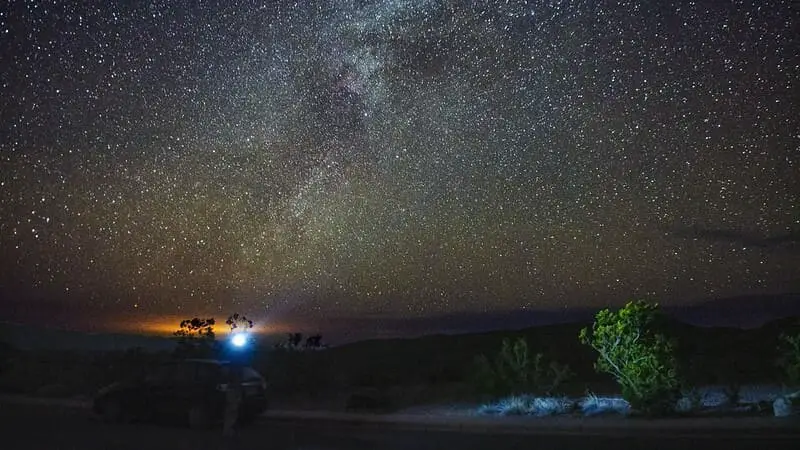
Located in the remote Chihuahuan Desert, Big Bend National Park offers some of the darkest skies in the U.S. See mesmerizing views of the Milky Way in this International Dark Sky Association gold-tier park.
Big Bend is the best place to stargaze in Texas. Read my article about the best time to visit Big Bend for stargazing.
During the day, explore the park’s vast desert landscapes, hike scenic trails, or embark on a river adventure along the Rio Grande, setting the stage for a remarkable stargazing experience once the sun sets.
- Bortle Scale 1, darkest skies in Texas
FREE STARGAZING CHECKLIST
My 5-page Stargazing Checklist will enhance your astronomical observations.
Follow this free checklist to navigate the night sky with confidence, clarity, and a sense of preparedness for a rewarding stargazing experience.

Big Bend Ranch State Park
Adjacent to Big Bend National Park, this vast wilderness area also features incredibly dark skies. Enjoy the serenity and panoramic night sky views at this Class 1 dark sky park.
During the day, engage in a wide range of outdoor activities, such as hiking, mountain biking, and horseback riding, amidst the park’s diverse terrain, before being captivated by the splendor of the stars above.
- Bortle Scale 1, darkest skies in Texas
- Remote location provides excellent stargazing opportunities
Blanco State Park
Blanco State Park is just an hour’s drive from Austin and features decent stargazing conditions. Take a quick weekend getaway here to escape the city lights and gaze upon the stars.
During the day, enjoy picnicking, swimming, or fishing in the picturesque Blanco River, immersing yourself in nature before embracing the tranquility of the night sky.
- Bortle Scale 4, good dark skies
- Regular stargazing events hosted by park rangers
Brazos Bend State Park
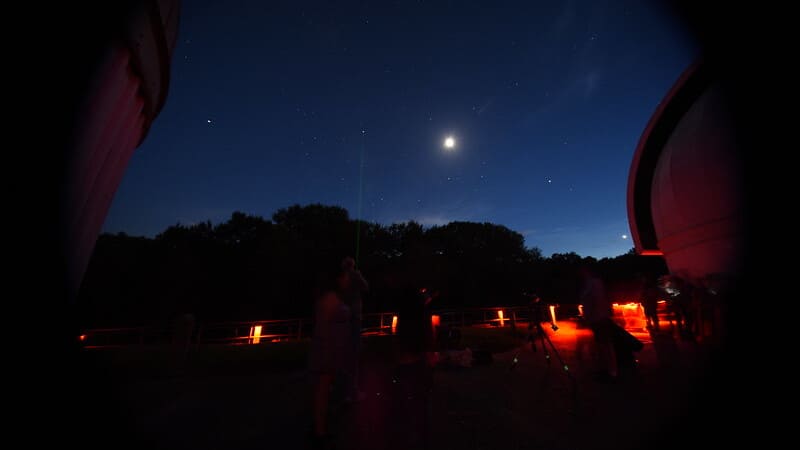
Head to Brazos Bend State Park, 45 miles southwest of Houston, for some decent stargazing options. Marvel at the night sky through their onsite observatory (George Observatory), offering various telescopes and programming.
During the day, explore the park’s diverse ecosystems, including wetlands and bottomland hardwood forests, while encountering various wildlife, including alligators. As the sun sets, prepare to be amazed by the wonders of the universe above.
- Bortle Scale 4, good dark skies
- Observatory offers public viewing nights
Canyon of the Eagles
Situated in Burnet, Texas, Canyon of the Eagles is a fantastic spot for stargazing. Experience the clear night skies and the park’s unique “Eagle Eye Observatory” for an unforgettable astronomy encounter.
During the day, explore the park’s trails, enjoy bird watching, or go boating on Lake Buchanan, immersing yourself in nature’s embrace before embarking on an extraordinary celestial journey.
- Bortle Scale 2, excellent dark skies
- Observatory offers public viewing nights
Caprock Canyons State Park
Located in the Texas Panhandle, Caprock Canyons State Park is known for its breathtaking night sky views. Stargaze among its diverse landscape, including the only wild bison herd in Texas.
During the day, marvel at the park’s dramatic canyons, hike scenic trails, or encounter the iconic Texas State Bison Herd. As darkness falls, prepare to be enthralled by the cosmic wonders above, undisturbed by urban lights.
- Bortle Scale 3, great dark skies
Colorado Bend State Park
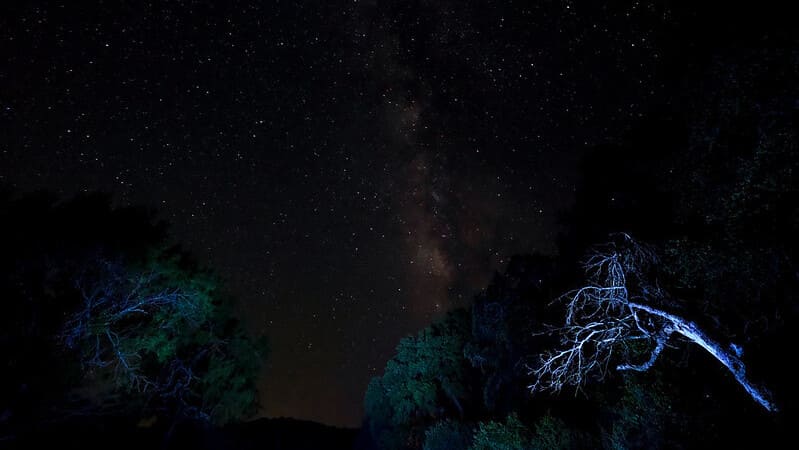
Colorado Bend State Park lies in the heart of Texas Hill Country. Immerse yourself in the tranquil wilderness, providing a perfect backdrop for stargazing and astronomical exploration.
During the day, venture through the park’s stunning landscapes, including dense forests, cascading waterfalls, and limestone cliffs. As night falls, the serene ambiance and relatively dark skies create an ideal setting to observe the celestial wonders above.
- Bortle Scale 3, great dark skies
- Regular stargazing events hosted by park rangers
Cooper Lake State Park
Find Cooper Lake State Park northeast of Dallas, offering a more accessible stargazing destination. See the stars clearer due to its distance from the city’s light pollution.
During the day, enjoy various recreational activities, including fishing, boating, and hiking, amidst the park’s scenic beauty. As night descends, find yourself in awe as the stars emerge, offering a celestial spectacle away from urban centers.
- Bortle Scale 3, great dark skies
Copper Breaks State Park
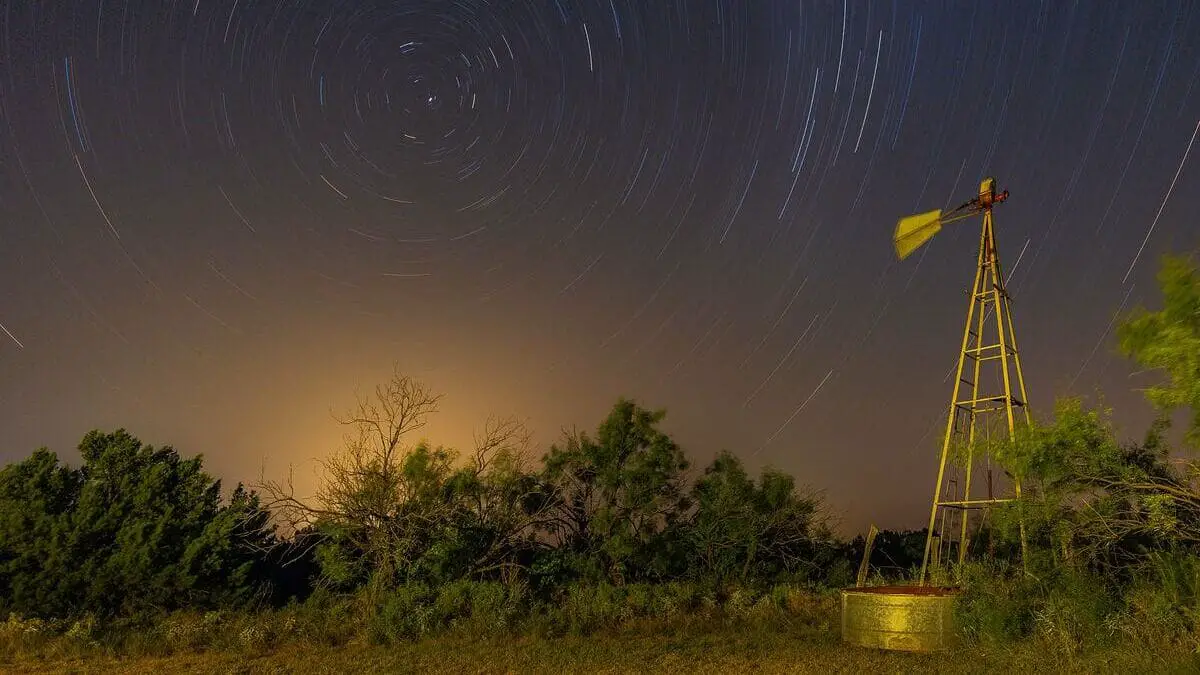
Copper Breaks State Park, located in North Texas, is an International Dark Sky Park. Gaze at the vibrant Milky Way and enjoy the park’s year-round astronomy programs.
Read my dedicated article about Copper Breaks State Park stargazing.
During the day, explore the rugged terrain, including mesas and canyons, and engage in mountain biking and wildlife-watching activities. As darkness envelops the park, prepare for an immersive stargazing experience.
- Bortle Scale 2, great dark skies
- Monthly star parties April through November
Davis Mountains State Park
In West Texas, Davis Mountains State Park offers unparalleled stargazing. Explore the night skies amidst the unique mountain terrain and participate in ranger-led programs catering to astronomy enthusiasts.
During the day, immerse yourself in the park’s natural beauty as you hike through picturesque trails, encounter diverse wildlife, and marvel at the stunning vistas. As night falls, the park’s elevation and remote location provide a haven for stargazers, offering unobstructed views of celestial wonders.
- Bortle Scale 2, excellent dark skies
- McDonald Observatory is located nearby
Davy Crockett National Forest
Located in East Texas, Davy Crockett National Forest provides an excellent stargazing spot. Find yourself beneath tall pines and dark skies, far from city lights and urban distractions.
During the day, indulge in outdoor activities such as hiking, camping, or wildlife spotting. As darkness blankets the forest, embrace the serenity and immerse yourself in the night sky’s brilliance, dotted with countless stars.
- Bortle Scale 3, great dark skies
- Regular stargazing events hosted by park rangers
Devil’s Sinkhole State Natural Area
Devil’s Sinkhole State Natural Area near Rocksprings, Texas, offers more than just a large limestone cavern. Enjoy the night skies and go on guided night hikes in this sanctuary for amateur astronomers.
During the day, marvel at the massive sinkhole, explore the unique karst terrain, and encounter diverse plant and animal life. As the sun sets, witness the captivating transformation of the sinkhole into a celestial observatory, where you can observe stars, planets, and other celestial objects.
- Bortle Scale 2, excellent dark skies
- Guided tours to view the sinkhole and stargaze
Devil’s Cove
Head to Lake Travis, just northwest of Austin, to find Devil’s Cove, a popular boating spot. With minimal light pollution, it’s perfect for a night of socializing under a blanket of stars.
During the day, enjoy various water activities such as boating, swimming, and fishing. As night falls, find yourself anchored in the tranquil cove, surrounded by dark skies that unveil the beauty of the cosmos. Experience the joy of stargazing and create lasting memories with friends and loved ones.
- Bortle Scale 2, excellent dark skies
- Remote location provides excellent stargazing opportunities
Devils River State Natural Area
Devils River State Natural Area is located in Southwest Texas and offers nearly untouched dark skies. It is designed as an International Dark Sky Sanctuary and boasts some of Texas’s best stargazing conditions.
During the day, explore the pristine natural surroundings, including crystal-clear rivers, rugged canyons, and diverse flora and fauna. As the sun sets, prepare for an awe-inspiring celestial journey, where the remote location and protected dark skies allow you to witness the wonders of the universe in all their glory.
- Bortle Scale 2, excellent dark skies
- Remote location provides excellent stargazing opportunities
Dinosaur Valley State Park
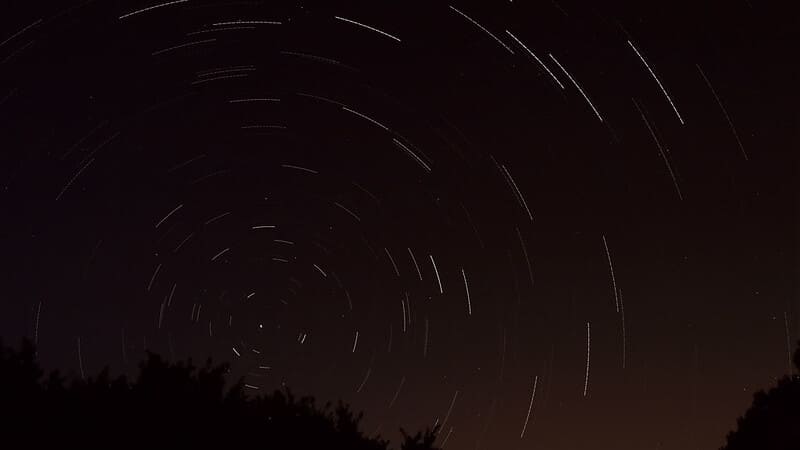
Dinosaur Valley State Park, about an hour southwest of Fort Worth, is both a geologist’s paradise and a stargazer’s delight. Discover ancient dinosaur tracks by day and admire the Milky Way by night.
During the day, step back in time as you explore the park’s fascinating dinosaur tracks, preserved in the riverbed. As darkness envelops the park, lay down a blanket and witness the cosmic wonders above, with the prehistoric ambiance adding an extra layer of enchantment.
- Bortle Scale 4, good dark skies
- Regular stargazing events hosted by park rangers
Dripping Springs
Located just outside Austin, Dripping Springs promotes responsible outdoor lighting to preserve its dark skies. Savor stargazing in a growing community committed to protecting its night skies.
During the day, explore the charming town, visit local shops, and enjoy the picturesque natural surroundings. As night falls, immerse yourself in the tranquility of the star-filled sky, where the community’s efforts ensure an exceptional stargazing experience.
- Bortle Scale 4, good dark skies
Elgin
Elgin is a charming town and a convenient option for stargazing, located 25 miles northeast of Austin. Find open spaces and darker skies, perfect for observing celestial events.
During the day, wander through Elgin’s historic downtown, explore local attractions, and savor the town’s vibrant atmosphere. When the night sky unveils its celestial wonders, find a quiet spot and gaze upon the stars, appreciating the serene beauty of the universe above.
- Bortle Scale 4, good dark skies
Enchanted Rock State Natural Area

Enchanted Rock State Natural Area is famous for its massive pink granite dome and its International Dark Sky Park status. Join the annual Enchanted Rock Star Party or stargaze solo amidst its unique geological features.
During the day, hike to the top of the dome for panoramic views of the surrounding Hill Country or explore the park’s diverse ecosystems. As night falls, witness the magic of the starry sky above the enchanting rock formations, as the park’s dark sky designation ensures an unforgettable stargazing experience.
- Bortle Scale 3, excellent dark skies
- Rock formations provide a unique stargazing experience
Fort Griffin State Historic Site
Travel back in time at Fort Griffin State Historic Site, boasting historical landmarks and dark skies. Gaze at the stars and enjoy public star parties hosted by the park’s resident astronomers.
During the day, immerse yourself in the area’s frontier history by exploring the reconstructed fort and visiting the onsite museum. As the sun sets, step away from the past and embark on a celestial journey, surrounded by the remnants of the fort and a vast expanse of unobstructed night sky.
- Bortle Scale 3, great dark skies
Garner State Park
Find Garner State Park in the remote Texas Hill Country, offering clear night skies perfect for stargazing. Float the Frio River by day and let the dazzling stars captivate you by night.
During the day, enjoy outdoor activities such as swimming, tubing, and hiking amidst the park’s scenic beauty. As twilight sets in, settle down along the riverbank, listening to the gentle flow of water while gazing at the twinkling stars above, creating an idyllic stargazing experience.
- Bortle Scale 3, great dark skies
- Regular stargazing events hosted by park rangers
Hubbard Lakes
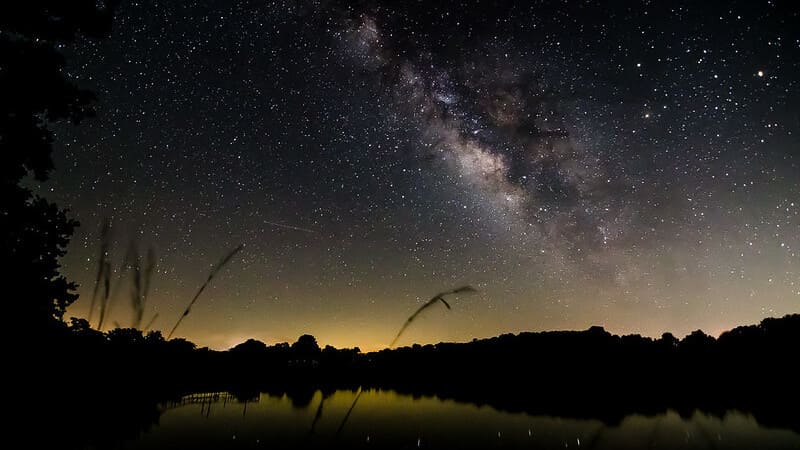
Situated near Austin, Hubbard Lakes features multiple small lakes, perfect for a night of waterside stargazing. Catch some of Texas’s picturesque sunsets and stay for the starry night sky.
During the day, indulge in fishing or boating activities on the tranquil lakes, surrounded by serene natural beauty. As darkness descends, find a peaceful spot along the lakeshore and witness the celestial symphony unfold above, where the reflection of stars on the water’s surface enhances the enchantment of the night.
- Bortle Scale 3, great dark skies
- Remote location provides excellent stargazing opportunities
Inks Lake State Park
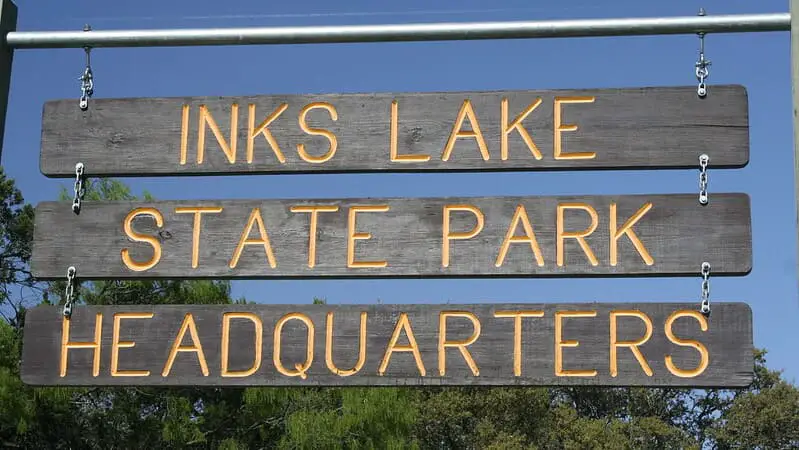
Also located in the Texas Hill Country, Inks Lake State Park offers relatively dark skies and a peaceful atmosphere. Enjoy a serene evening of stargazing along the banks of the lake.
During the day, engage in various recreational activities, such as swimming, boating, or hiking through the park’s scenic trails. As the sun sets, find solace near the calm waters of Inks Lake, where the surrounding beauty and minimal light pollution provide an ideal setting for celestial observation.
- Bortle Scale 4, good dark skies
- Beautiful lake views for stargazing
Kickapoo Cavern State Park
Journey to Kickapoo Cavern State Park near Brackettville, Texas, for a unique stargazing experience. Explore its 20 known caves and let the beauty of the night sky aboveground take your breath away.
During the day, embark on cave tours and marvel at the stunning formations and delicate ecosystems. After sunset, venture to the park’s open spaces and witness the celestial splendor unobstructed by artificial lights. The park’s remote location and cave surroundings offer a distinct stargazing encounter.
- Bortle Scale 2, excellent dark skies
- Good location for astrophotography
Lost Maples State Natural Area
Lost Maples State Natural Area is found in the remote Texas Hill Country. As the fall foliage lights up the daytime scenery, gaze at the equally vibrant night skies perfect for stargazing.
During the day, witness the beauty of the changing seasons by hiking through the park’s scenic trails, surrounded by maple and oak trees. As night falls, lie back on a blanket and marvel at the starry canopy above, where the combination of seasonal colors and twinkling stars creates a captivating ambiance.
- Bortle Scale 3, great dark skies
- Beautiful maple trees provide a unique stargazing experience
Matagorda Island
This uninhabited barrier island is located on the Texas coast and is ideal for pristine stargazing conditions. Discover the night sky’s beauty, surrounded by serene wildlife and aquatic landscapes.
During the day, explore the island’s untouched beaches, hike through its dunes, or observe the diverse bird species. As darkness falls, revel in the island’s untouched beauty, where minimal light pollution allows for unparalleled views of the stars, unspoiled by civilization.
- Bortle Scale 2, excellent dark skies
- Remote location provides excellent stargazing opportunities
- Good location for astrophotography
McDonald Observatory
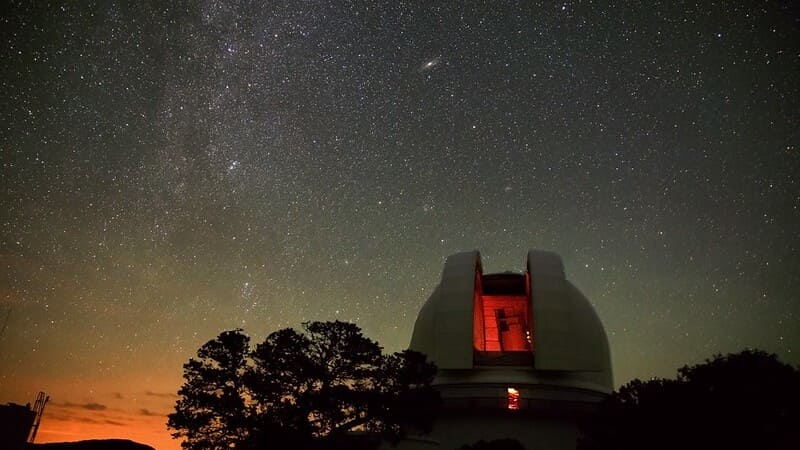
Head to West Texas to visit the McDonald Observatory, run in partnership with the University of Texas. Participate in their renowned stargazing programs and learn from their multiple telescopes and knowledgeable staff.
During the day, explore the observatory’s visitor center, learn about astronomical research, and marvel at the state-of-the-art facilities. As night falls, witness the observatory come to life as astronomers guide you through celestial wonders using powerful telescopes, providing an unforgettable and educational stargazing experience.
- Bortle Scale 1, darkest skies in Texas
- Offers public viewing nights and guided tours
- Home to several research telescopes
Palo Duro Canyon State Park
Find Palo Duro Canyon State Park in the Texas Panhandle, featuring stunning geological formations and dark skies. Take in the park’s beauty by day and experience panoramic stargazing by night.
During the day, hike or bike through the breathtaking canyon trails, explore vibrant rock formations and appreciate the park’s diverse flora and fauna. As night embraces the canyon, be captivated by the brilliance of the starry sky above, where the towering canyon walls and remote location create an optimal stargazing environment.
- Bortle Scale 2, excellent dark skies
- Remote location provides excellent stargazing opportunities
- Good location for astrophotography
Pedernales Falls State Park
Pedernales Falls State Park lies in the Texas Hill Country, east of Johnson City. Escape the city for a night of tranquil stargazing among the cascading falls and lush vegetation.
During the day, take in the park’s scenic beauty as you hike along the river, swim in the pools, or have a picnic by the waterfalls. As darkness falls, find a peaceful spot near the falls, away from city lights, and witness the celestial display unfold above. Combining the serene natural surroundings and the park’s efforts to minimize light pollution ensure a rewarding stargazing experience.
- Bortle Scale 4, good dark skies
- Beautiful waterfall views for stargazing
Rafes Urban Astronomy Center
Located near Denton, Texas, the Rafes Urban Astronomy Center is perfect for stargazers of all ages and experience levels. Attend one of their scheduled star parties to fulfill your celestial curiosity.
During the day, explore the center’s exhibits, learn about astronomical phenomena, and engage in interactive activities. As night approaches, join fellow enthusiasts and experienced astronomers in the center’s observation area. With telescopes at your disposal and knowledgeable guides to assist you, delve into the mysteries of the night sky and witness celestial wonders.
- Bortle Scale 4, good dark skies
- Monthly Star Parties
- Located in a suburban area for easy access
Reimers Ranch Park
Reimers Ranch Park, situated along the Pedernales River, is popular for rock climbers and stargazers. Take in the vast night skies after a day of exploring the park’s rugged landscape.
During the day, challenge yourself with rock climbing, hike along scenic trails, or enjoy a leisurely picnic by the river. As twilight casts its enchanting spell, find a peaceful spot on the open fields or atop a rock formation. Gaze upon the dark skies and let the starry expanse captivate your imagination, surrounded by the park’s natural beauty.
- Bortle Scale 4, good dark skies
- Good location for astrophotography
Resaca de la Palma State Park
Located in South Texas near the Mexican border, Resaca de la Palma State Park boasts an international birding center during the day and beautiful night skies after dark. With minimal light pollution, enjoy an exceptional stargazing experience.
During the day, explore the park’s diverse ecosystems, including resacas (oxbow lakes), wetlands, and thorn forests, while observing an array of bird species. As the sun sets and the birds settle, find solace in the tranquility of the park and witness the celestial marvels above, where the absence of artificial lights allows for a remarkable stargazing adventure.
- Bortle Scale 4, good dark skies
- Unique wetland views for stargazing
Seminole Canyon State Park & Historic Site
Head to Seminole Canyon State Park & Historic Site to explore ancient rock art and stellar stargazing opportunities simultaneously. Marvel at its ancient pictographs by day and admire the cosmic wonders by night.
During the day, embark on guided tours to discover the park’s remarkable rock art, including vivid pictographs that offer glimpses into ancient civilizations. As the day transitions to night, embrace the canyon’s serene ambiance and witness the starry sky’s splendor above, where the park’s remote location and protected dark skies create an ideal environment for stargazing.
- Bortle Scale 2, excellent dark skies
- Guided tours to view ancient rock art and stargaze
South Llano River State Park
Journey to South Llano River State Park and discover an International Dark Sky Sanctuary. Enjoy some of Texas’s best stargazing conditions while camping under the stars.
During the day, immerse yourself in the park’s natural beauty by hiking along the river, birdwatching, or enjoying water activities. As the sun sets and darkness falls, experience the park’s transformation into a celestial wonderland. Set up your campsite and marvel at the brilliance of the stars above, undisturbed by artificial lights. The park’s commitment to preserving dark skies ensures a genuinely immersive stargazing experience.
- Bortle Scale 3, great dark skies
- Beautiful river views for stargazing
Stephen F. Austin State University Observatory
Visit the Stephen F. Austin State University Observatory on the university campus in Nacogdoches, Texas, for a unique stargazing experience. With state-of-the-art telescopes and knowledgeable astronomers, you can explore the wonders of the night sky and learn about celestial objects.
During the day, immerse yourself in the university atmosphere and explore the campus. As night falls, head to the observatory and witness the facility’s cutting-edge technology and expertise. Peer through powerful telescopes, engage in educational programs, and deepen your understanding of the universe in this enriching stargazing destination.
- Bortle Scale 4, good dark skies
Dark Sky Parks and Preserves

Dark Sky Parks in Texas
In Texas, there are some fantastic locations for stargazing, including these Dark Sky Parks:
- Canyon of the Eagles Resort: Located in the Upper Highland Lake Region of the Texas Hill Country, this 950-acre park offers clear night skies away from big city light pollution. They even have an observatory with two telescopes for exceptional views of celestial objects.
- Big Bend Ranch State Park: A beautiful park in West Texas with minimal light pollution, making it perfect for star lovers.
- Copper Breaks State Park: A popular destination in the Panhandle Plains region for camping and stargazing.
International Dark Sky Parks
Texas also boasts several International Dark Sky Parks, which are recognized by the International Dark-Sky Association (IDA) for their efforts to preserve the night sky:
- Enchanted Rock State Park: Located in the Hill Country, this park features fantastic rock formations and pristine night skies for stargazing.
- South Llano River State Park: Another gem in the Hill Country, South Llano River offers clear skies for observing the stars and a beautiful river for daytime activities.
- Devils River State Natural Area: This Southwest Texas sanctuary is classified as an International Dark Sky Sanctuary, providing an even higher level of protection against light pollution.
If you’re an amateur astronomer or passionate about stargazing, these parks will provide breathtaking views and an unforgettable experience. So pack your telescope and enjoy the magnificent Texas skies!
Observatories and Star Parties

McDonald Observatory
At the McDonald Observatory, you can attend their fascinating Evening Programs. Here, you’ll enjoy constellation tours in the Helen S. Martin Star Amphitheater and get a close-up view of celestial objects through telescopes in the Rebecca Gale Telescope Park.
Some highlights you might catch during these programs include:
- Views of the Milky Way
- Planets like Jupiter and Saturn
- Deep-sky objects such as galaxies and nebulas
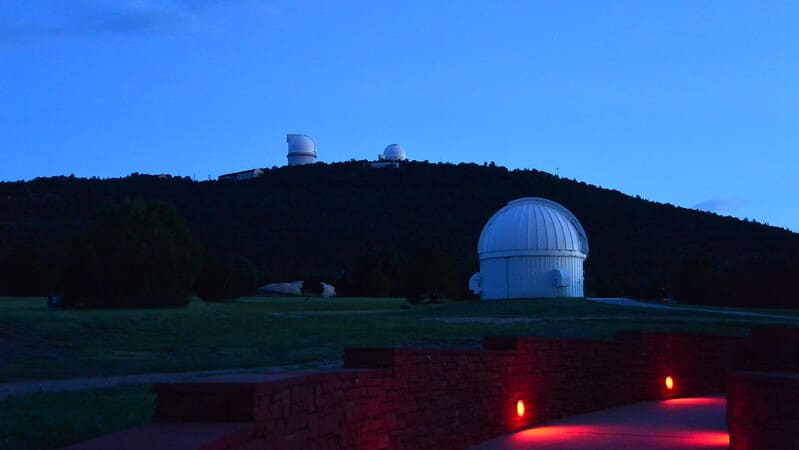
George Observatory
A trip to Brazos Bend State Park will lead you to the George Observatory, where you can explore the cosmos with its powerful telescopes. As you gaze through the telescopes, you might see:
- Colorful star clusters
- Breathtaking lunar details
- Bright planets and their moons
The observatory hosts regular public viewing nights, making it a fantastic destination for stargazers of all ages.
Star Parties and Events
For an unforgettable stargazing experience, attend a star party in Texas. Held by astronomy clubs and observatories, these events usually feature:
- Guided tours of the night sky
- Telescope observations of celestial objects
- Educational presentations on astronomy topics
Some popular star parties in Texas include the Enchanted Rock Star Party at Enchanted Rock State Natural Area and the monthly Open House by the Central Texas Astronomical Society at the Meyer Observatory near Clifton. Remember to check the event calendars for dates and details— and don’t forget to bring your sense of wonder!
Activities and Amenities
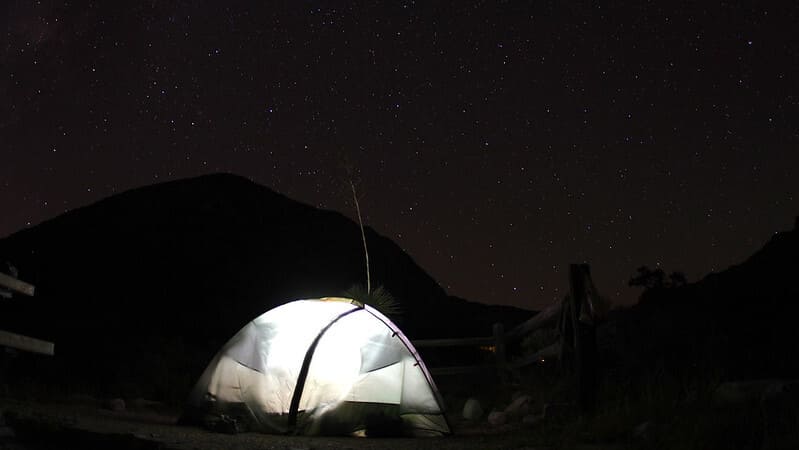
Nature Activities
Texas is home to various breathtaking landscapes for nature enthusiasts like you. Get in touch with your inner naturalist and explore the following activities:
- Spotting diverse wildlife, including birds, mammals, and unique plant life
- Photography: Capture the beauty of dark skies, flora, and fauna
- Stargazing events hosted by parks and observatories
You can also join ranger-led night programs or attend stargazing festivals in some parks.
Hiking and Horseback Riding
Texas offers numerous trails for you to hike or ride horseback. As you traverse the terrain, you can expect mesmerizing views of the Milky Way, especially in low-lying areas. Here are three popular parks for hiking or horseback riding:
- Big Bend National Park: Known for its gold-tier designation, it is also perfect for hiking, biking, and horseback riding.
- Enchanted Rock State Natural Area: Go on a moderate hike up the granite dome to get unobstructed night sky views.
- Copper Breaks State Park: Explore the beautiful Panhandle landscape on well-maintained trails.
Milky Way Viewing Opportunities
The skies in Texas get darker than you can imagine, making them perfect for stargazing. Here are some prime spots to catch dazzling views of the Milky Way:
- McDonald Observatory: Located in the Davis Mountains, this observatory is known for its frequent stargazing events.
- Parks with nearby observatories: Indian Lodge or Davis Mountains state parks are great options.
- International Dark Sky Parks: Big Bend National Park and Copper Breaks State Park hold this prestigious designation and are ideal for Milky Way viewing.
Remember to check the moon phase and weather forecast for optimal stargazing conditions, and bring a blanket, a comfy chair, and your curiosity. And most importantly, have fun exploring the beautiful Texas night sky.
Astronomy and Stargazing Tips
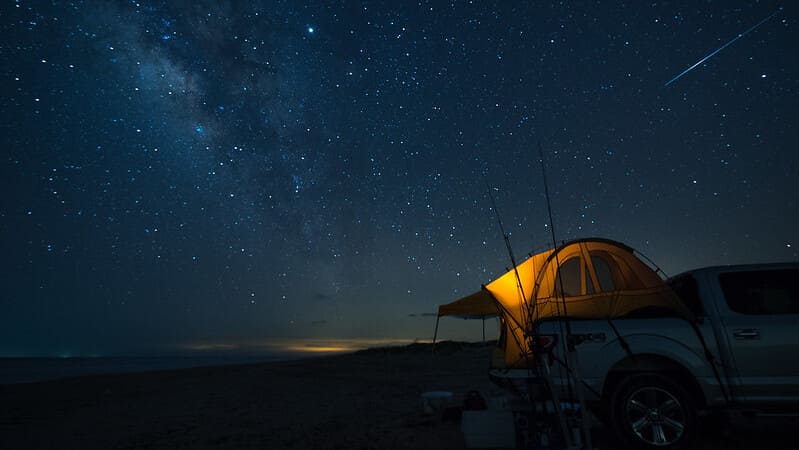
Reducing Light Pollution
Light pollution can significantly impact your stargazing experience, especially in cities like Austin. To truly enjoy the universe and its constellations, consider these tips:
- Move away from city lights: Explore parks or areas with less artificial lighting.
- Use red flashlights: Red light preserves your night vision and minimizes light pollution.
- Advocate for dark sky-friendly lighting: Support local initiatives to install shielded, low-intensity public lighting.
Navigating the Night Sky
Familiarity with the starry sky can help you identify constellations and celestial objects.
Follow these steps:
- Familiarize yourself with stellar patterns: Learn the shapes and locations of famous constellations like the Big Dipper.
- Identify the brightest stars: Learn the names and positions of bright stars such as Sirius or Vega.
- Use free smartphone apps: Tools like SkyMap and Star Walk 2 can help you easily navigate the night sky.
Choosing the Right Equipment
To maximize your stargazing experience, here are some equipment recommendations:
- Binoculars: A good pair provides magnification and portability, perfect for beginners.
- Telescopes: For more serious stargazers, invest in a quality telescope to explore the depths of the universe.
- Star charts: Grab a star chart or download a digital version to help you locate celestial objects accurately.
Remember, the night sky is a vast, mesmerizing canvas. With these tips and tricks, you’ll enjoy stargazing and exploring the universe’s wonders. So, turn off those lights, grab your gear, and let the Texas night sky dazzle you!
Frequently Asked Questions
Which are the best stargazing tours in Texas?
The best stargazing tours in Texas include visiting the McDonald Observatory, Big Bend National Park, and various dark sky parks. Choose a tour based on your location and experience level.
Where can I find stargazing spots near me in Texas?
To find stargazing spots near you in Texas, use my Texas Dark Sky Map, the above list of best locations, or check out Texas Parks & Wildlife Department resources for information on local state parks with night sky viewing opportunities.
What are some popular stargazing accommodations in Texas?
Popular stargazing accommodations in Texas include camping at state parks, staying at lodges or inns near observatories, and renting cabins or vacation homes in dark sky areas.
When is the Texas Night Sky Festival?
The Texas Night Sky Festival takes place annually, usually during the spring. Check the festival’s website for specific dates and event details.
Which month offers the best stargazing experience in Texas?
The best stargazing experience in Texas occurs during winter, with clearer skies. However, you can enjoy stargazing year-round during clear nights.
Where can I see the Milky Way in Texas?
You can see the Milky Way in Texas at dark sky parks, Big Bend National Park, or the McDonald Observatory. Visit these locations on moonless nights for the best viewing experience.
Free Map of the Best Stargazing in Texas
Here’s your free map of the best Texas stargazing.

Summary: Best Places to Stargaze in Texas
Thank you for reading my article on Texas stargazing.
Enchanted Rock State Natural Area, for example, is known as one of the best places to go stargazing in the state. As an International Dark Sky Park, it’s an ideal location to view the stunning Milky Way.
Another fantastic spot is Palo Duro Canyon, where visitors can enjoy the appearance of the Milky Way on a moonless night. This location even offers star parties, moon gazing, and full moon hikes.
In addition to those parks, some other great places for stargazing in Texas include Devils River State Natural Area and Caprock Canyons State Park & Trailway. With clear views and minimal light pollution, these parks offer rare opportunities to experience the beauty of the night sky truly.
Throughout Texas, parks often schedule events like star parties and astronomy lessons, making it easy for amateur stargazers to join in on the fun.
So when you’re planning your next night out under the stars in Texas, remember to check out these great stargazing spots and events.
Enjoy the beauty of the cosmos that Texas has to offer and make unforgettable memories while gazing at the stars. After all, there’s a reason they say, “The stars at night are big and bright, deep in the heart of Texas.”
Happy Stargazing!
Read my other articles in my Best Stargazing in US series:
- Best stargazing in Arizona
- Best stargazing in California
- Best stargazing in Colorado
- Best stargazing in Florida
- Best stargazing in Hawaii, and on the Hawaiian Islands of Kauai, Oahu, and Maui
- Best stargazing in Maine
- Best stargazing in Nevada
- Best stargazing in New Mexico
- Best stargazing in New York
- Best stargazing in North Carolina
- Best stargazing in Ohio
- Best stargazing in Oklahoma
- Best stargazing in Oregon
- Best stargazing in Pennsylvania
- Best stargazing in Utah




